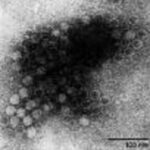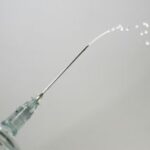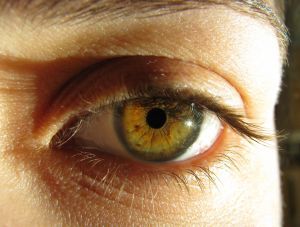Parvo is a very deadly canine disease. Parvo causes severe dehydration, which adds to its lethality. It will also cause internal bleeding which comes out through vomit and liquid stools. It is easy to contract and once it has been in your home, it will be there for years unless you thoroughly bleach every possession and square millimeter of your home. It is nearly impossible to get rid of and will survive for up to three years in your home. Vaccinations are a very good deterrent for the disease but not always foolproof. Since the vaccine is given in a series of shots, the puppy can contract the virus during the inoculation process. Your puppy could also get the virus before it is old enough to receive the vaccine. The virus can infect any dog but is most lethal and damaging to dogs under one and a half years old. It is the puppies that it kills, and it causes a horrible death. Once your dog gets it, it has very little chance of surviving. There is hope though. I have had a lot of experience with this disease and have beaten it before. This guide is not a foolproof cure or treatment regimen, but it worked for a particular little puppy named Skyy. Here is her story.
Skyy was a little mixed breed mutt that I acquired from a woman that was unable to care for her and her brother, Joshua. Their mother had been run over days after they were born so the two puppies never received the vital breast milk that they needed. This was the start of Skyy’s dilemma. We got the two puppies at about 4 weeks old. We bought the puppy formula at Wal-Mart and were fully ready to nurse the two dogs until they were ready for solid food. The puppies had other ideas and refused the formula. They went straight for the canned dog food and the occasional table scraps. Joshua shot up like a weed and was huge in no time. At about seven weeks old, we had no problem finding him a permanent home. We decided to keep the little girl, Skyy though. She was doing great and was the obvious runt of the litter. That is when it struck. There was a Parvo outbreak in North Platte, NE. My family would often volunteer at the local pound to take the dogs for walks and play with them in the park. That is where we met Duke. Duke was a very pretty Catahoula, or Leopard Dog. These are a very strange-coated dog and are actually very beautiful animals. Duke was a very friendly and playful little hound that the kids grew attached to right away. Little did we know that the Dalmatian that previously occupied his cage had died of Parvo. This infected Duke, which in turn infected us. That is how we brought the deadly present home to Skyy. Skyy was about eight weeks old when she first showed signs of sickness. It took us near two days to figure out what was wrong with her. From the pound, the disease spread through most of the city. Skyy would likely have contracted the virus anyways.
The first signs are the lack of appetite, lethargy, loss of balance and vomiting with diarrhea. My wife and I scoured the internet for hours trying to find cures, remedies, or anything that would save Skyy. It all really boiled down to the puppy being able to stay hydrated. Parvo in itself is not very deadly and will run its course in a matter of weeks. The part that kills is the dehydration. So we went back to Wal-Mart. Some Pedialyte and puppy formula was Skyy’s diet for the next several weeks. Every time we left the house, we feared the worst when we came back. I was so graciously given the job of being the first one to check the house when we returned. This was so the kids and my wife did not have to see Skyy dead. Gratefully, that never happened. There were some very close calls and some moments when we thought she would give up and die, but Skyy held on. The toughest part of the ordeal was watching her bleed from her mouth, nose, and backside. We were sure that she was a goner at this point. Amazingly, after a little over a week, she started to walk around on her own and eat solid food. We knew she was in the clear at this point. Her survival was a miracle and this is what we did.
Because Parvo causes severe dehydration, we reasoned that Pedialyte would be very useful and this proved to be true. We would mix the powdered puppy formula with the Pedialyte and fed this to Skyy. The hard part was that we had to force feed her. This was not so easy to do. She would continually fight her feedings. The method that seemed to work best was to lay her on her back along my forearm. Then I would have to pry her mouth open and squirt the formula in. As soon as it was in her mouth I would clamp it shut and gently massage her throat. This would actually help her to swallow some of it. This method tended to be a little messy, but it did work. The gentle massage on her throat gets her throat muscles to pull some of the liquid down and this was enough to keep her hydrated. I would have to continue this for at least ten mouthfuls each feeding. This is what it took to get the required amount of formula into her. The guidelines for what your puppy will need are on the formula package. A baby bottle works the best, because you can use the nipple to squirt the food and there is a measurement scale on the side of the bottle so that you can keep track of what the puppy has eaten and what they have not. You will need to adjust this scale for how much they spit out all over your lap, but it should be close to accurate. An oral syringe would also work for this and may be a better way but we already had the bottles on hand and did not think of the syringe at the time. The other thing that we did was constantly bathe her. This would clean a lot of the virus off her body. Since the virus is spread through feces and stomach fluids, we had to constantly clean her. This would keep as much of the virus from re-infecting her as much as possible. About five to six times minimum, we would have to clean her in a small bucket of warm water. This would also help keep fluids in her system.
After a very long week, we noticed the improvement and Skyy has been doing just fine ever since. She is now a very healthy and active dog with no other problems. This makes Skyy one of the blessed few that actually survive this nightmare of disease. Many vets out there will offer a treatment for Parvo. This treatment is a series of IV’s and some medication, a painkiller, and some overnight stays at the doggie hospital. This can easily run up to the thousands of dollars. It is easier and may have a better survival rate, but many out there cannot afford this treatment. That is why I developed this method and it worked. The biggest thing is to keep your puppy hydrated while the virus runs its course. A lot of prayer wouldn’t hurt either.






